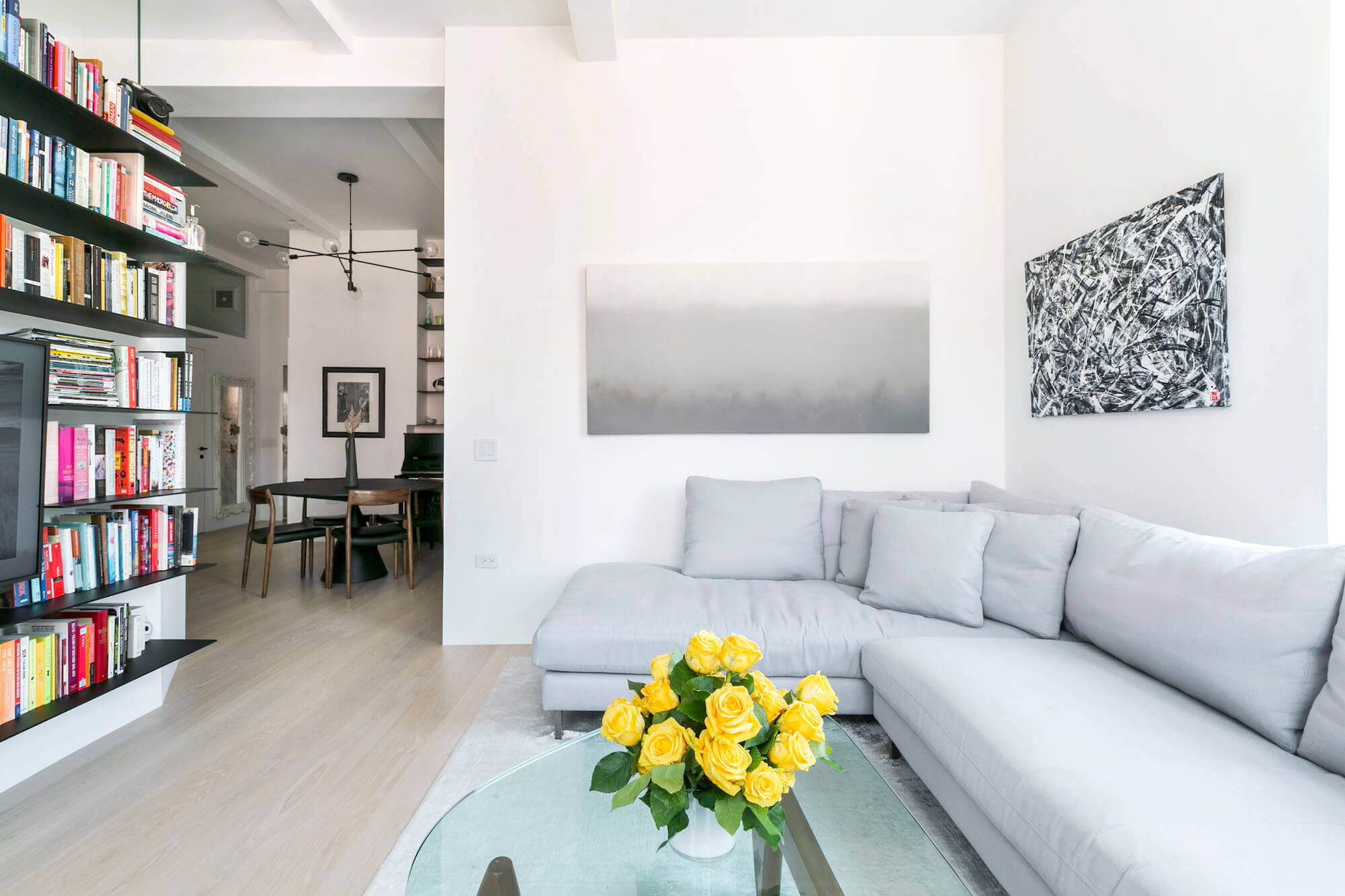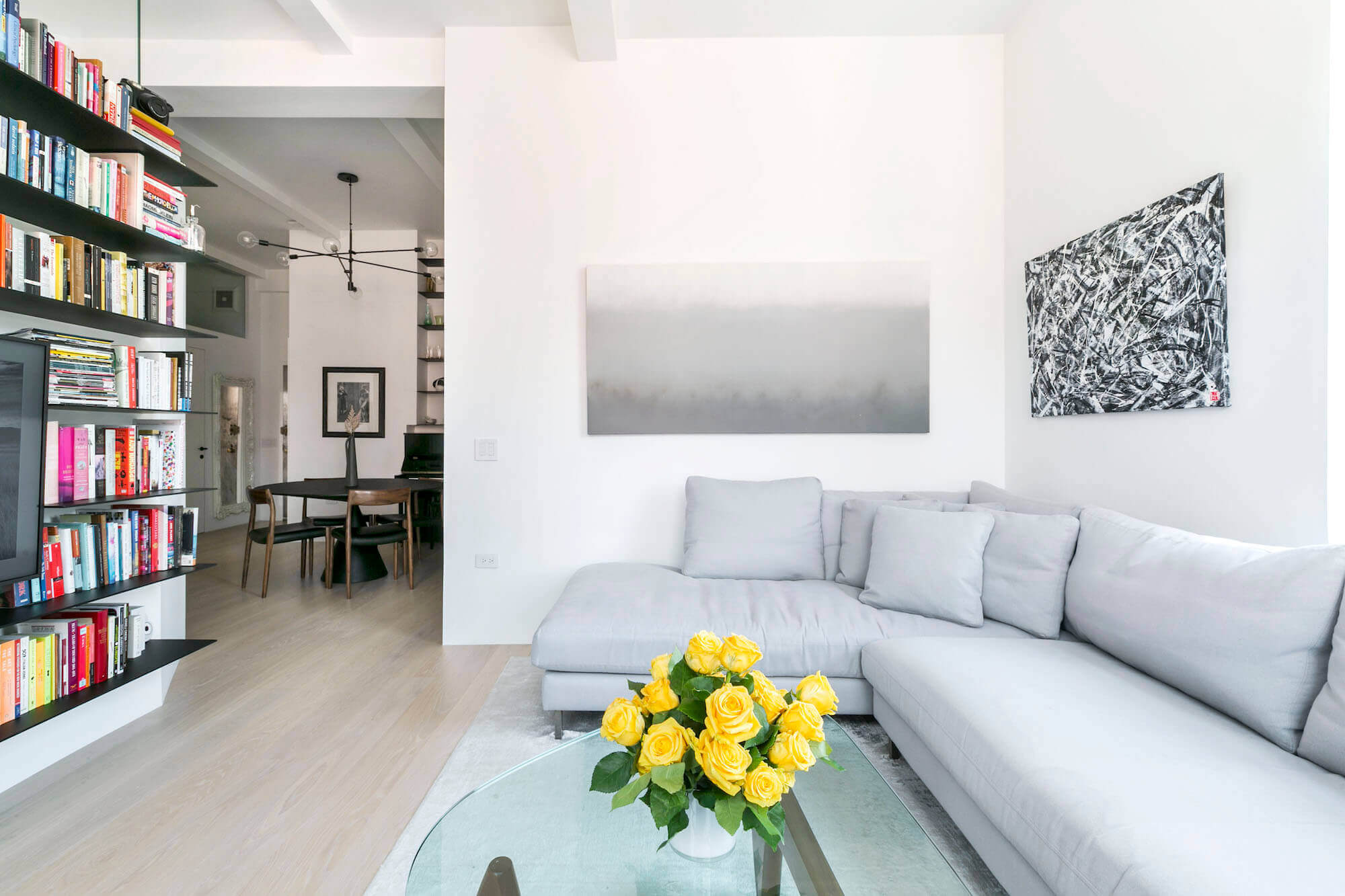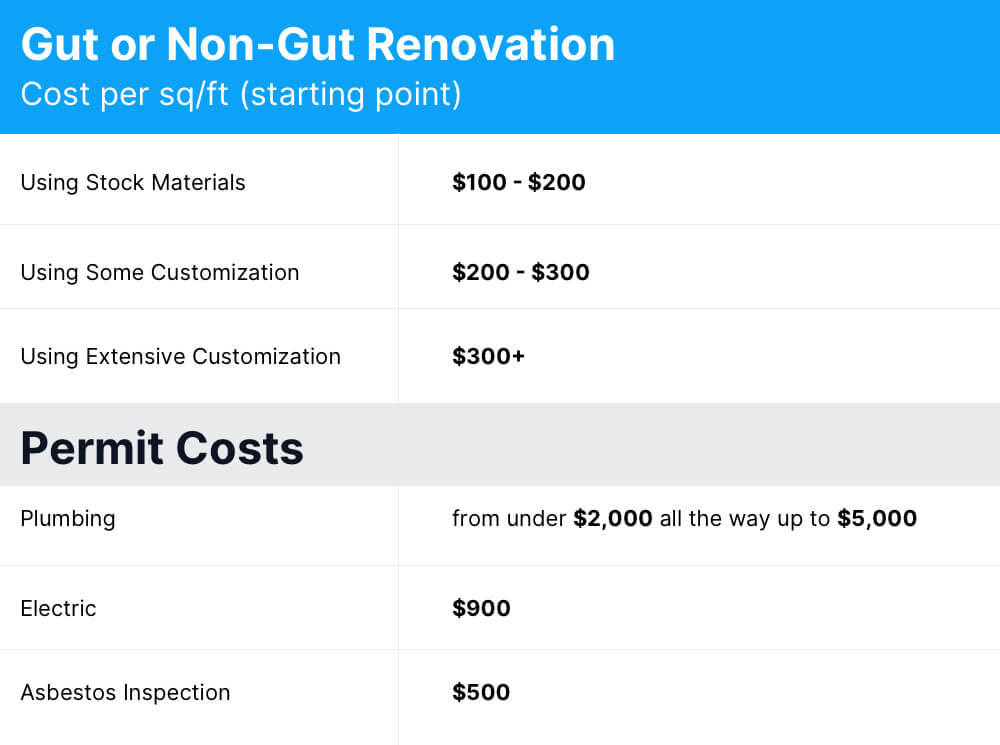2021 How to Budget for a Full-Home Renovation in NYC

Learn about the factors that impact full home renovation costs in NYC; from permits and construction to hidden costs to prepare for

A good starting point to budget for a full-home remodel in NYC ranges from $100 to $200 per square foot (psf), according to general contractors from Sweeten
Sweeten matches home renovation projects with vetted general contractors, offering advice, support, and up to $50,000 in renovation financial protection—for free.
These estimated costs per square foot are for the entire home (including materials) averaged across both “wet” spaces (baths and kitchens), as well as “dry” spaces (living rooms, bedrooms, offices, etc).
Here’s a breakdown of typical NYC home renovation starting costs:
Full-home renovation in NYC: $100—$200 psf
Dry spaces: $30—$50 psf
Wet spaces: Baths start at $400 psf; kitchens start at $300 psf
Gut remodel with stock materials: $100—$200 psf
Non-gut remodel with stock materials: $100 psf
Gut remodel with customization: $200—$300 psf
Non-gut remodel with customization: $200 psf
Structural factors, extensive customization: $300 psf and up
Plumbing permits: From under $2,000 all the way up to $5,000
Electrical permits: $900
Asbestos inspection: $500—$1,000
Pro tip: Do not wait. The pandemic has caused a backlog in the supply of materials in many sectors. For homeowners interested in renovating, it’s smart to schedule and sign with a contractor to lock in your material prices. You’ll also want to book a start date on the contractor’s schedule. If you do wait, prices will only continue to go up and your material order starts at the back of a long queue.
The cost for a gut renovation vs. a non-gut
When gut-renovating a whole home, the building’s current conditions, alteration requirements, spatial challenges, and range of material selections should be considered.
The term “gut renovation” is used informally for projects where all of the visible surfaces in a room are replaced. However, technically in a gut renovation, interior walls are stripped down to the studs and framing or knocked out entirely.
A gut will start at the higher end of the $100 to $200 psf range, while a renovation in which you redo the space within the existing walls will be on the lower end. For example, in a 700-square-foot, one-bedroom apartment, a renovation will come in around the $50,000 to $70,000 range, while a gut renovation will likely exceed $100,000
The non-gut renovation may involve a new kitchen and bath, as well as refinishing flooring, replastering, and painting, plus upgrades in materials and finishes. The gut renovation will include the above as well as more extensive work such as replacing walls, installing new piping and wiring systems, moving doorways, and installing all new flooring.

Given that New York City apartments vary widely and can present unique challenges, a per-square-foot estimate is really a ballpark figure for you to get started. Here’s an overview:
Basic costs for an NYC home renovation
When estimating price per square foot, the scope of work usually includes the following:
Basic demolition
Framing: the skeletal, load-bearing structure to which the interior walls and other systems are attached
Insulation and drywall
Wiring, including outlets and switches
Plumbing
Heating/cooling systems
All visible materials and fixtures in kitchens and baths (described below)
You’ll notice this doesn’t include appliances. Also, the choices you make for visible materials—tile, flooring, millwork, paint, lighting fixtures, electronics, and more—can significantly affect the price of your renovation.
t the $100 to $200psf range:
Materials are generally prefabricated or stock items and in finishes that are available at common retail outlets.
Cabinets in this price range are typically MDF (medium-density fiberboard).
Tiling will run under $10psf
Lighting will be standard but solid basics.
Solid wood floors may be shorter, narrower planks made of less expensive woods.
The work will be careful, clean, and well-installed at this level with higher quality labor and skillsets at the upper end of the range.
t $200 to $300psf range:
Some customization on details such as joints, millwork, and hardwareCabinets are custom or semi-custom and can include built-ins. Countertops in natural stone or desirable man-made materials at this level Solid, wide-planked hardwood flooringProjects at this price point are not usually gut renovations, but rather remodels that focus on the space within the existing walls.One thing to note: While Sweeten contractors attempt to explore all avenues to stay competitive, it is an industry that is affected by trade. The prices you’re quoted at any given time may not be the same six months or a year from now. Prices on labor and materials fluctuate and this will be reflected in your overall quote
What you’ll get for $300 per square foot and higher:
If you are paying $300psf or above, chances are there may be factors like layout changes or structural work, such as combining apartmentsMoving walls, adding staircases, shifting gas and plumbing, and electrical rewiring all contribute to a higher per-square-foot cost, as well as add to the behind-the-scenes expenditures (more on that below). Since pricing for kitchens and baths runs higher than other rooms, more of those equal a higher price per square foot. For example, renovating a 1,000-square-foot apartment that has three bathrooms will be more expensive than an apartment of the same size with just one bathroom.At this level and beyond, you can expect to see more extensive customization, fine finishes, and luxurious materials. This includes handmade tile, exotic wood grains, natural stone, and bespoke millwork details that complement the home’s architecture. You might also see custom door casements and extensive lighting details at this level. There won’t be much in the way of off-the-shelf materials, and the workmanship should be top-notch. Renovations that hit all of these notes can easily run over $500 psf.
Budget for permits, design, and everything behind-the-scenes
1.) Design
Depending on your general contractor and your level of involvement in the project, you may also need/want professional design services.
There are other scenarios in which an architect is required. These include applying for permits, navigating complicated approval systems, or meeting insurance coverage requirements. Architects can charge a flat fee or a percentage of the total project. Sweeten general contractors are able to refer architects which helps to facilitate the process.Another option is a design/build firm, which combines design and construction services within one fee and contract. In these cases, the firm’s principal is capable of both aspects of the job, or a dedicated designer is on staff or on retainer. Many
2.) Building and city requirements
If you live in a co-op or condo building, you’ll likely need to submit your plans—thus necessitating an architect—to your building’s board. Co-ops generally are stricter about renovations than condo buildings, though many condos are now adopting more stringent rules as well. Buildings have their own requirements; some may call for insurance coverage minimums.
Some alteration agreements require a security deposit to cover the possible scope of any damage. They may also request that you pay the fees incurred by the condo or co-op board to review and approve your plan. You may find that contractors who can afford to work in buildings with more extensive specifications tend to have higher operating costs in order to meet higher insurance requisites.
The NYC Department of Buildings requires that you obtain permits for many types of construction work, including plumbing, electrical, and various inspections depending on the existing and planned space. Permits can add up. An electrical permit can run close to $900, plumbing permits can cost from under $2,000 all the way up to $5,000, and an asbestos inspection can be $500
3.) Demolition and site prep
Depending on the state of the original space, you may need to do extensive preparatory work after demolition, but before installation can begin. Older apartments will almost always require stripping, leveling, and plastering. Uneven floors and walls must be leveled before cabinets can be hung, doors framed, or tiling installed. These costs are determined by the general contractor once they have a chance to examine your space.
4.) Behind-the-scenes costs
For 2021, Sweeten general contractors are seeing wood materials as the main increase in costs. “These material costs have increased approximately 3x the amounts mainly due to Covid related issues, from what we have seen,” said Sweeten contractor Thomas. “These, in turn, relate to higher costs for plywood subfloors, kitchen cabinets, and other woodwork-related projects.”
Compared to costs for the “visible” parts of your renovation, pricing for the “unseen” costs can be difficult to anticipate. While labor is a clear one, keep in mind that different forms of labor can be priced very differently. Wiring and plumbing work, for example, tends to be expensive. And over the past year, master plumbers and electricians have seen costs go up, “primarily due to the safety measures and certifications that have been imposed on these trades by the Department of Buildings,” said Sweeten general contractor Aaron
Plumbing for each fixture generally runs between $1,500 to $2,000 per piece in New York City. So, it’ll cost at least $5,000 for a licensed plumber to run new lines for a sink, toilet, and bathtub. In general contracting, skim coating, a technique that hides a wall’s uneven appearance and imperfections, and gives the smoothest surface possible, is the most expensive type of labor. In some cases, it can be more affordable to tear down old walls and put up new drywall.
Additionally, you should note that from the contractor’s perspective, “labor” on the budget proposal may include not only the hourly rate they pay their workers, but also insurance, license, and other overhead fees that keep their business running. (Contractors typically take home 10-15% profit. For example, if they do $2 million worth of business this year, they are netting about $200k.) Insurances and other costs of running a business increase year over year, and while the costs are not passed 1:1 to the client, contractors must raise prices to maintain operations. Some show a specific line on the budget for profit/overhead, while others build it into other budget lines.
WATCH VIDEO:
Tips on how to budget your NYC home renovation
Once you’ve accounted for each line item in your budget, allocate an additional 10 to 15 percent as a cushion. Projects can run over budget as a result of unforeseen circumstances, so it’s good to err on the safe side.
Many factors go into the per-square-foot estimates. Trying to come up with a plan to match your budget? Here are some tips from contractors and renovators:
Mix high and low. This refers to materials, which should be selected for maximum impact. You may choose a handmade tile for the kitchen backsplash while sticking to an off-the-shelf option for the second bath. Make a custom statement where it will really get noticed, and use standard materials where it won’t.
Don’t skimp on plumbing and electrical infrastructure. Although these aspects probably won’t get you many compliments at a dinner party, you still need licensed and qualified experts for these jobs. If you don’t, there may be pricey problems to deal with in the long run.
Focus on kitchens and baths. Spend your money here! These rooms have the most resale value potential.
Consult experts upfront. If you are inclined to hire an architect or designer for a major transformation, get them on board early. This can help save money by mapping out a clear plan to avoid costly changes mid-stream. Set aside 15 to 20 percent of your budget for this professional. In general, hiring licensed professionals early is a cost-effective way to prevent insurance headaches later on by using their expertise to avoid mistakes that can lead to delays.
—
Not sure how to start your renovation? Click here for Sweeten’s six steps on planning your remodel and how to find a vetted general contractor.
Sweeten handpicks the best general contractors to match each project’s location, budget, scope, and style. Follow the blog, Sweeten Stories, for renovation ideas and inspiration and when you’re ready to renovate, start your renovation on Sweeten
The post 2021 How to Budget for a Full-Home Renovation in NYC appeared first on Sweeten.
